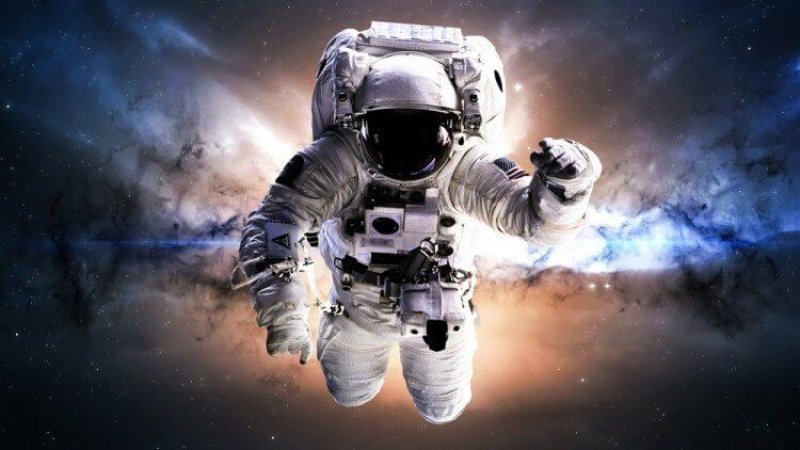Over the past five decades, space travel advocates have been pushing to expand our footprint in space. They dream about lunar bases, missions to Mars and colonies in free space. The visions are ever changing, with government efforts joined by those of private companies like Elon Musk’s SpaceX — in the midst of an effort to send tourists on a trip around the Moon — gravitating toward the space tourism sector. While the goals and how to accomplish them are in constant flux, there remain certain obstacles that must be overcome before we take that next big step. And one of the biggest is the need to protect the health of our future space explorers.
That’s what’s prompted NASA to turn to the fast-moving world of gene therapy to solve several potential medical issues facing astronauts on lengthy space missions.
The US space agency and the associated Translational Institute for Space Health Research (TRISH) at the Baylor College of Medicine are now calling for proposals from private companies and other groups to develop a kind of gene therapy for astronauts. But this would be different than recent gene therapies that target specific diseases such as hemophilia or various types of cancer. Instead, the idea here is to minimize the damage from space radiation through a kind of preventive treatment. Exposure to radiation in space can cause cancer, cardiovascular disease, cataracts and the loss of cognitive function due to accelerated death of brain cells. These different disease categories involve very different mechanisms — cancer and heart disease result from radiation damaging DNA, while loss of brain tissue results simply from radiation killing off mature cells, and still other diseases result from radiation destroying stem cells.
Molecular spinoff on Earth
While the goal here is to boost our chances of expanding our reach beyond planet Earth, that doesn’t mean the technology won’t offer benefits to those of us who never leave its surface. From cell phones and GPS to materials as mundane as the Velcro on your sneakers, space technology spinoffs are well known phenomena. In the health arena, research by NASA and other space agencies has dozens of spinoffs, including superconductor innovations that have improved and decreased the cost of magnetic resonance imaging (MRI) scanners, a Mars rover-inspired robots that patrol hospital halls while enabling doctors and nurses to interact with patient devices, plus a host of medical monitoring devices.
The call for new gene therapy treatments would appear to have automatic spinoff potential for medicine on Earth. This is true, despite the fact that the radiation that astronauts will encounter on missions beyond low Earth orbit (LEO) will be substantially different from the radiation that people receive in medical and nuclear industrial settings on Earth. Although development nucleotide based therapies constitutes just one of six research categories that the NASA translational space health program will begin funding in January 2019, it is not the only genetic engineering category on the list. Among the other categories is the development of new genetically engineered edible plants, with novel functions apart from their edibility.

As for the benefits of radiation gene therapy on Earth, whereas cancer typically comes to mind when people think of exposure to moderate levels of radiation, therapies to mitigate damage to the heart and brain are equally high on the list of potential medical spinoffs. One of the key worries concerning long-duration space travel is how humans will be impacted by exposure to the high energy particle radiation (galactic cosmic radiation or GCR) that fills deep space. Will they experience rapid loss of memory and cognitive function? This concern has boosted research toward a drug to combat those effects. Similarly, there is concern about space radiation causing long-term cardiac damage. The expected radiation dosage on an exploration mission to Mars would be much lower (and of a different physical nature) than that experienced by cancer patients undergoing radiation therapy for breast cancer and certain types of lymphoma. But there is a strong rational that DNA damage mitigation strategies will be similarly applicable to prevent cardiac damage in both astronauts and Earth-bound recipients of radiation therapy.
Off-Earth colonization
The reason for the concern about space radiation is that life forms are actually well shielded from the most damaging components of space radiation on the surface of Earth and even in low orbits, such as the altitudes where the International Space Station orbits Earth once every 92 minutes. This is because the strong magnetic field generated by movement of metals in Earth’s core deflects protons and other charged particles that comprise much of the space radiation that travels toward Earth. The deflection produces barbell shaped regions at high altitudes known as the Van Allen Belts, where space radiation is concentrated.
Once beyond the Van Allen belts, a spacecraft is within the normal interplanetary space radiation environment, which includes much of the space between Earth and the Moon. Spacecraft someday may actually generate their own magnetic fields to deflect radiation much like Earth does. And there are various pharmaceuticals being developed for radiation projection. Even as NASA works to develop a radiation gene therapy, there is a simple solution to the question of how to protect colonists on other worlds: Simply build the colonies within lava tubes far underground.
The fact that the ground, if one builds deep enough, is a powerful shield against radiation offers reason for optimism that people will be able to live on, and visit, other worlds. But it’s also a reason to remind Mars and Moon colony enthusiasts to take all of those beautiful images of domes and other surface colony structures with a grain of salt. Domes may indeed cover Martian and lunar colonies in the years to come, but only for the sake of plants. Domes are where the farms will be, where the food is grown, but the people will be living underground.
David Warmflash is an astrobiologist, physician and science writer. BIO. Follow him on Twitter @CosmicEvolution.































